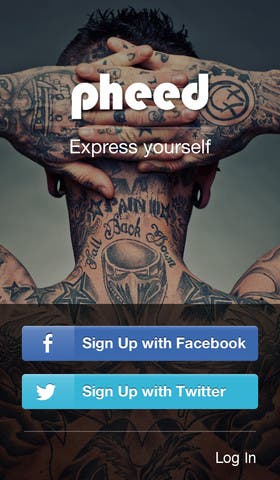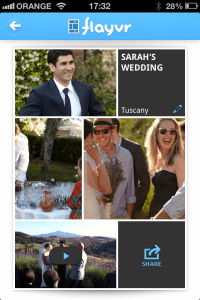 |
| Source: fortytwotimes.com |
But while we're still a ways away from Peak Facebook, it is true that the world's largest social media network is in decline in certain quarters, most notably among adolescents and young people in the industrialized English-speaking world. This is not a new phenomenon, having been identified as early as mid-2011, but one that recently has become more pronounced. A recent Guardian article stated that Facebook has lost 10 million visitors in the US and seen no growth in monthly visitors in the UK over the past year. While accurate data is hard to come by, anecdotal research suggests that the lion's share of this decline is among adolescents and twenty-somethings.
The reasons behind this decline amongst the youths isn't difficult to fathom. Facebook has long lost its coolness cachet, and now that most kids' parents are now on Facebook, it has now officially become the social networking equivalent of Dockers pants and minivans. Moreover, the past couple of years have seen a plethora of new social media compete for the kids' attention. The era of the big, all-encompassing social media networks like Myspace, Facebook and Twitter has given way to the era of niche tools like Pinterest, Vine and others - boutique tools that eschew the path of trying to be everything for everyone. Facebook already has that market cornered anyway.
So where are the kids going? According to Denise Rowden in her article in Empowering Parents, the under-15 crowd is migrating to photo-sharing networks like Instagram and Snapchat, as well as to Kik, a messaging app that offers greater anonymity than standard text messaging because there’s no specific number linked to the text. Meanwhile the young and hip are moving onto niche platforms like the monosyllabic trio Vine, Chirp and Pheed. At least they were last month. Who knows now?
 | |
| Source: murraythenut.com |
But at the same time I still have an insatiable desire to be ahead of the curve (which is just grownup-speak for wanting to be cooler than thou). That and being a social media "guru" (as one person actually had the audacity to call me recently) at my place of business, it's my job to stay on top of this stuff. It's also my hobby, although at times I think I'd be better served taking up something more useful like knitting or carpentry. In the advent of the collapse of civilization as we know it, my LinkedIn endorsements for SEO copywriting and social media marketing will be worth less than a Zimbabwean banknote. Oh well, it's what I do.
Here are the most interesting alternatives to Facebook out there. As a caveat, I don't actually use all of these. That's why I don't like the 'guru' description - we're all just trying to figure this stuff out.
1. Pheed
 Of all the new social media platforms on the block, none have generated as much online buzz as this one. Launched in October 2012, Pheed combines the basic microblogging format with a unified platform for sharing all forms of digital content, including photos, audio clips, voice notes, video, and live broadcasts. Users can subscribe to other users' channels and view their subscribed channels' content in real time and can can 'love' or 'heartache' specific pheeds, hashtags and 'pheedback' as well as 'remix' content in a fashion similar to a retweet. It also allows users to directly sell their creative work, making it a sort of amalgam of Twitter, Instagram, Tumblr and Etsy.
Of all the new social media platforms on the block, none have generated as much online buzz as this one. Launched in October 2012, Pheed combines the basic microblogging format with a unified platform for sharing all forms of digital content, including photos, audio clips, voice notes, video, and live broadcasts. Users can subscribe to other users' channels and view their subscribed channels' content in real time and can can 'love' or 'heartache' specific pheeds, hashtags and 'pheedback' as well as 'remix' content in a fashion similar to a retweet. It also allows users to directly sell their creative work, making it a sort of amalgam of Twitter, Instagram, Tumblr and Etsy.In less than a year of existence, Pheed is considered by many to be the 'next big thing' in social media. Described by Forbes as "Twitter with a business plan," Pheed was ranked the #1 app in the Apple Top Charts social category in February 2013, above both Twitter and Facebook. Thus far it has made inroads into a predominantly US youth market, boosted by celebrity endorsements by the likes of Chris Brown, David Guetta and Miley Cyrus and finding a huge following amongst the skateboarding community. Some commentators have expressed skepticism over this much-ballyhooed new tool, dismissing it as a copycat app with a lot of hype and little substance. But if coolness cred is what you're after, Pheed is the place to be.
2. Path

Path is a photo sharing and messaging service for mobile devices touted by many as a potential Facebook-slayer. Launched in 2010 by Shawn Fanning and former Facebook executive Dave Morin, Path passed the 10 million user mark in May of this year. The network's sales pitch is a clever one, going for the jugular of its superpower rival. "Tired of managing 'friendships' with people you've never met?" its tagline asks. "Then come to us. You can only have 150 friends, making this the network you'll use to speak to people you actually like." An aesthetically pleasing app with a pithy focus, the site also functions well as a companion to Facebook and other social network platforms.
While Path's growth has been impressive, the now three-year-old platform has not been without controversy. In February 2012, the company landed in hot water for accessing and storing member phone contacts without their knowledge or permission, earning them an $800,000 fine from the US Federal Trade Commission. More controversy has followed this year when Path was caught spamming contacts without permission. (Guardian tech commentator Alex Hern quipped that CEO Morin, as an alum of both Apple and Facebook, has "inherited some of the worst traits of his old bosses.") But PR debacles aside, Path has an excellent project that continues to garner positive reviews. We'll see if it can stay out of trouble.
3. Medium and Branch
 |
| No it shouldn't. |
 Unlike Pheed or Path, these two platforms aim to complement existing systems rather than compete with them (not surprising considering that Williams and Stone are still Twitter directors). Medium remains an invitation-only platform whose calling card appears to be quality control (some might say exclusivity), while Branch is open to anyone with a Twitter account. But both appear to be positioning themselves as grown-up, intellectually-oriented alternatives to the social media mainstream, offering, in Stone's words, "high quality public discourse [in which] curated groups of people are invited to engage around issues in which they are knowledge[able]." Not exactly the universal sales pitch of Pheed or Path, but an intriguing alternative.
Unlike Pheed or Path, these two platforms aim to complement existing systems rather than compete with them (not surprising considering that Williams and Stone are still Twitter directors). Medium remains an invitation-only platform whose calling card appears to be quality control (some might say exclusivity), while Branch is open to anyone with a Twitter account. But both appear to be positioning themselves as grown-up, intellectually-oriented alternatives to the social media mainstream, offering, in Stone's words, "high quality public discourse [in which] curated groups of people are invited to engage around issues in which they are knowledge[able]." Not exactly the universal sales pitch of Pheed or Path, but an intriguing alternative.4. Yammer
 Those of you who work for a large company or organization have doubtless at least heard of this one, if not used it. Touted as Twitter for internal corporate communications, Yammer is an old fart in social media terms, having been established in 2008 and sold to Microsoft in 2012. By late-2010, the service was being used by more than three million users and 80,000 companies worldwide, including 80 percent of Fortune 500 companies, and it continues to grow. While mainly focused on internal communication for businesses, Yammer can, in theory, be used by any collective, although groups are limited to members with the same email domain name. But this could just as easily apply to an artists' collective as a multinational corporation.
Those of you who work for a large company or organization have doubtless at least heard of this one, if not used it. Touted as Twitter for internal corporate communications, Yammer is an old fart in social media terms, having been established in 2008 and sold to Microsoft in 2012. By late-2010, the service was being used by more than three million users and 80,000 companies worldwide, including 80 percent of Fortune 500 companies, and it continues to grow. While mainly focused on internal communication for businesses, Yammer can, in theory, be used by any collective, although groups are limited to members with the same email domain name. But this could just as easily apply to an artists' collective as a multinational corporation.In addition to serving as a creative convection space where people chime in on projects they're working on, Yammer also serves as a release valve for company employees, giving them a sheltered space to gripe about annoying clients behind their back and start sub-groups on topics (or grievances) of interest to them. It's also a great way to solicit feedback and forge connections with collaborators on the other side of the globe, without all the noise barriers presented by Twitter. While limited in its scope, Yammer is arguably the best possible digital tool for the world's introverts - a quiet, non-intrusive way of sharing projects and building connections. But not the sort of thing you can simply 'join' on your own.
5. Flayvr
 Do we really need another photo-sharing app - especially one with such a nauseatingly cutesy misspelled name as this? The reviewers of this new platform seem to think so. Launched in Israel in 2012, Flayvr takes a new and welcome approach to organizing and making sense of mobile device-based digital photo and video collections and sharing them among friends, something that many have identified as a shortcoming of both Instagram and Flickr. Co-founder and CEO Ron Levy explains that he was inspired to create Flayvr
because it was something he needed himself. "I found myself trying to
capture [family] moments with my iPhone but I found myself stuck in these
endless camera rolls."
Do we really need another photo-sharing app - especially one with such a nauseatingly cutesy misspelled name as this? The reviewers of this new platform seem to think so. Launched in Israel in 2012, Flayvr takes a new and welcome approach to organizing and making sense of mobile device-based digital photo and video collections and sharing them among friends, something that many have identified as a shortcoming of both Instagram and Flickr. Co-founder and CEO Ron Levy explains that he was inspired to create Flayvr
because it was something he needed himself. "I found myself trying to
capture [family] moments with my iPhone but I found myself stuck in these
endless camera rolls."While not the first such application (Everpix, Keepsy, Snapjoy, and Batch have all attempted the same thing), Flayvr takes it a step further with a slick, user-friendly platform focused on grouping photos for the user's own benefit and ease-of-access. As an organizational tool, Flayvr has garnered rave reviews in the tech community, particularly for its ability to show videos playing in real-time in thumbnails along with your pictures. Still a newcomer on the scene, it remains to be seen whether this new mobile photo album-creating app will be able rise above its competition, but it appears to be gaining considerable momentum.
6. Create your own SM network
 |
| Phuck you Pheed! I'm starting a Wiki! |
And of course there's always the grand-daddy of them all: the wiki, a concept that dates back to the earliest days of the Internet. Want to create an open-source repository of information open to as many (or as few) people as you deem fit to, at no cost? The old-fashion low-tech wiki might be what you need. And thanks to the exploits of Julian Assange and others like it, there's something positively punk about the wiki, as it allows people with minimal SM expertise to swap information on everything from strategic planning to death metal lyrics to egregious violations of international law by governments who would rather not have said information made public. What's not to love about that?
Thanks for sharing Design Agency Solihull
ReplyDeleteThank you for posting this awesome article. Click here to know more HR Services in Worcesterhire
ReplyDeleteThanks for sharing this post Tree Services Adelaide
ReplyDeleteThank you for the posting great article Silica Sands
ReplyDelete